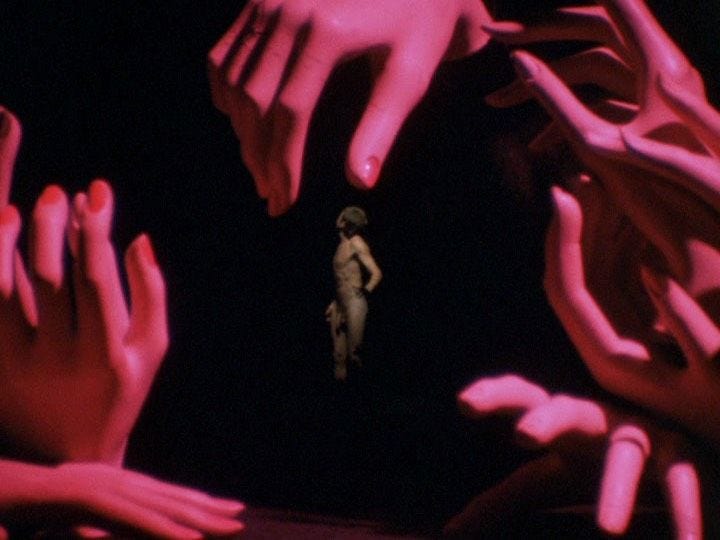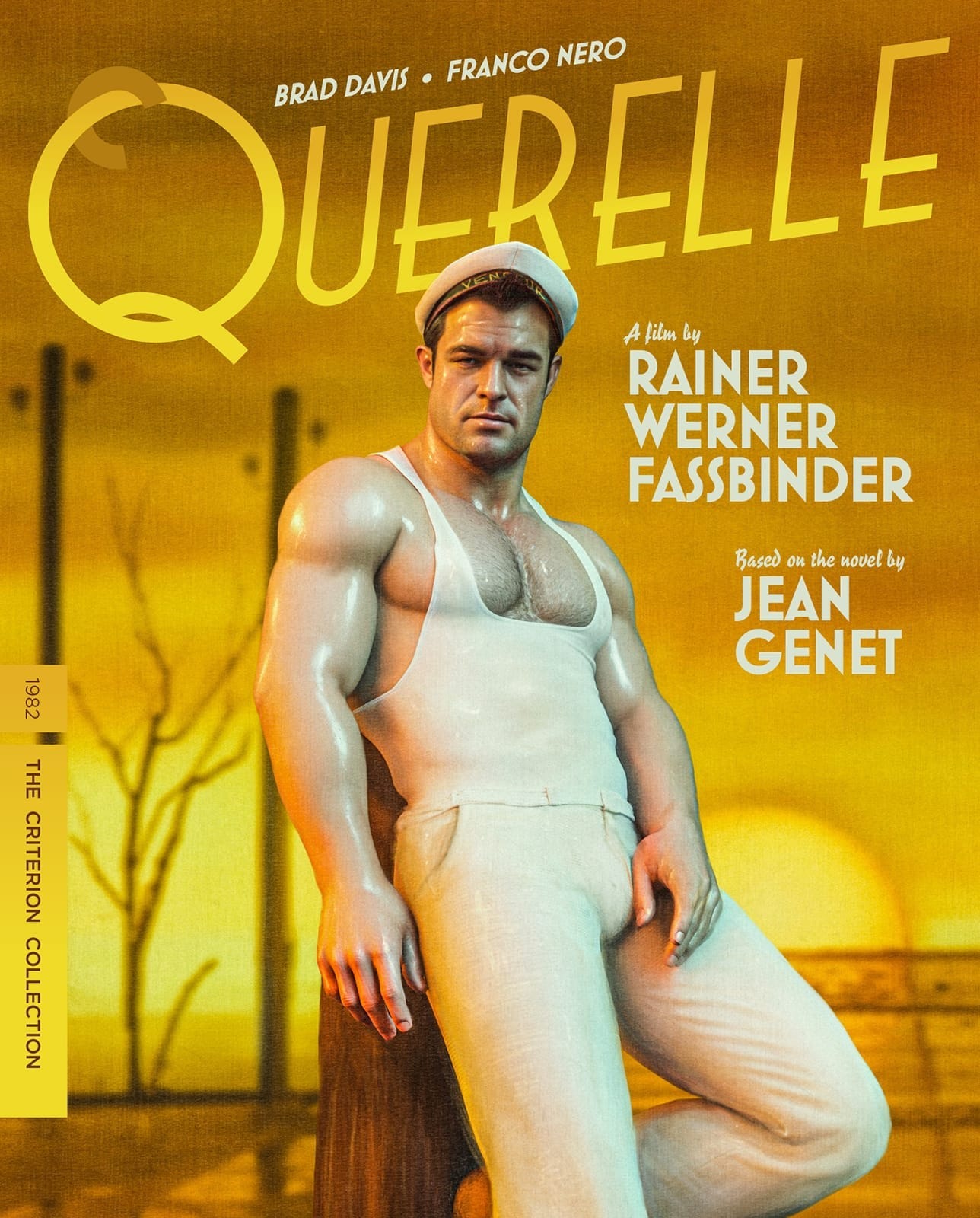I don’t mean to brag, but I’ve never met a sex negative Gen Z. To clarify, I’ve never met one of these adolescent boogeymen who fret about almost seeing Cillian Murphy’s penis or how long a kiss in a Spider-Man sequel lasts or whatever it is neo puritanical nerds do. Because again, I truly do not know what they do.
In 2023, UCLA released a study claiming that 51 percent of the 1,500 surveyed said they wanted to see more content about platonic relationships and friendships. While 47.5 percent said sex “isn’t needed” for most TV shows and movies, with 44 percent feeling romance is “overused.” Now, pornography reappears in the front line of the culture wars (so proclaims Project 2025) while the artists and academics (i.e. leftists and freaks) handwring about the loss of sexuality and sensuality in culture. Our culture is often declared sex negative, if not sexless by design.
This generational context is lost on me. My peers are too horny.
The reign of the family franchise film for all ages (call it Marvel, Disney, action franchises, Oscar bait, whatever) is a disguise for inoffensive corporate moral codes that cater to the lowest common denominator. This doesn’t mean children because children are smart. They are made for an algorithmic idea of broadness and lack - perhaps the imaginary anti-sex Gen Z. The resulting works are homogenizing, infantilizing, and numbing. Assembly-line filmmaking has been around as long as the studio system, but at least then the assumed median was nominally respected.
In these times before, there were countercultural forces that existed in opposition to the mainstream. Something like punk music, slow cinema, beat poetry, or deconstructed fashion could stand in difference to a monoculture in all senses. They were independent not just in content but in the way they disseminated, expressed, and defined. But deviating from the median was work - searching to unearth art and subculture that was more meaningful amidst the straight, puritanical, or just plain lame meant you needed intention and taste. It was accessible in that the barrier to entry was a concert ticket, train ride, or zine. You could join, but you had to look, you had to want it.
The cycle of culture tells us that the mainstream always finds ways of exploiting subcultures in the end. Chanel does a show with “hip hop“ fashion, Madonna does “Vogue”, etc. We find our culture at a fascinating point where we have almost infinite subcultural microcosms that are hyperconnected but virtual and thin. Deciding what actually means something in the expanse becomes difficult, and the monoculture absorbs indiscriminately and faster than it ever could.
In this case, we can ask, what still stands in difference to this total mass? What still shocks and challenges? What refuses and refutes such a vast and diverse expanse?
I recently found myself at an IFC screening of Bruce La Bruce’s queer cult classic No Skin Off My Ass - a retelling of Altman’s That Cold Day in the Park in which a Toronto hairdresser picks up a skinhead and becomes obsessed with him. It’s a bit like if John Waters went for leather, philosophy, and softcore - it’s super 8 art schlock with an esoteric soundtrack. It’s too pretentious to be porn, too obscene for the casual repatory visitor.
I’d come across La Bruce after another IFC screening teased a viewing of Thom Andersen’s Los Angeles Plays Itself. This film examines Los Angeles through its depiction on film, and gets its name from Fred Halstead’s gay pornographic film LA Plays Itself. Halstead’s film uses areas of Los Angeles as its backdrop that were demolished and rarely photographed, providing a rare ethnographic peek into a lost world amidst the sex (La Bruce’s Hustler White does the same). LA Plays Itself also happens to be one of two pornographic films in MOMA’s permanent collection - Halstead is a queer porn auteur, a rare label shared by La Bruce.
Halstead led me to Bijou, an even more hardcore film by Wakefield Poole that contained almost no words, swirling neon fantasy sequences, and outstanding mustaches. Despite its sex and distribution method, Bijou carries many hallmarks of slow cinema. Perhaps more softcore fantasia than hardcore ethnography is James Bidgood’s Pink Narcissus, another queer fantasia rooted more firmly in the cult artwork of Kenneth Anger. Here, traditional eroticisms made admissible through their artistic worth, genre, or symbolism morph with the explicitly pornographic. I watched both films on a dirty laptop screen at 480fps on the Internet Archive.
A High School obsession with Obayashi’s House led me to his Sada, the same erotic legend that birthed Nagisa Ōshima’s infamous steamy art house flick Realm of the Senses rendered as a technicolor musical - the only sexually explicit musical I have encountered. This was also the only film mentioned that was on the Criterion Channel.
I could go on.
These works represent a continuum of cinema challenging the established vast gulf between art and pornography, high taste and low, the erotic and the obscene. While these films span period and genre they are united in basing their work in sex, an association that immediately sequesters it from a true mainstream.
The term “Art Porn“ seems unfair, lacking some meaningful colon or slash, but is useful in illustrating the way many of these films are seen or pointedly unseen. “porn“ is a term that denotes this sense of unworthiness, as well as the focus these works have on sex as being both meaningful and inevitable, present for its own sake, subversive in its fun or just plain fun.
“Art Porn” is the reverse of porn chic. Instead of the mainstream employing the aesthetics of porn to give it outside meaning, “Art Porn“ takes capital-A-Art hostage as a medium for expressing sexualities that are forbidden. The implication of porn chic is that it gives the meaningless of porn a healthy, acceptable meaning. “Art Porn“ implies Art and Porn as similar naturalized forces in life, that explicit sexuality can be a means to art, and art can be a means to sexuality.
To be clear, this is not to say all portrayals of explicit sex are ethical, interesting, or art. However, it is this muddiness that is ripe for experimentation, for clarification, for the expansion of defining human experience. Like pulp or trash or “cult” or whatever else, there is revelation in battling taste. There is also value to what an already disregarded medium can be a vehicle for. “Art Porn“ stands out because it seems so vast and untapped.
This isn’t a manner of liking or disliking culture’s absorption of pornographically inflected art. It’s already happening. Without enough truly subaltern art and subcultures to leech, more corporate and mainstream art circles are opening their doors to more hardcore sources. A particularly ugly new Criterion cover for Fassbinder’s Querelle shows a muscled man in an uncanny digital rendering. A Bottega Veneta ad sits at the back of a popular gay porn periodical showing an unbuttoned pair of leather trousers (no full frontal though, thank heavens). Luca Guadagnino is delivering Queer later this year, coming in at 2 and a half hours with plenty of promised full frontal and gay sex.
None of these attempts capture what is obscene, what is hidden, and what is special about their source materials. To me, the revelation that they provide is rebuking the concept of sex as existing for specific purposes, be they narrative or rhetorical. These works become havens for those who accept sex as being sites of desire, fun, and fantasy.
Despite some Queer pornographic works becoming canonized and revered, their presence is ephemeral. They disappear from streaming, exist primarily on old DVDs, or are only available to pirate. They are anomalies in the archive, deemed unseemly and thus often passed over for restorations or repertory screenings. They exist to be consumed by a niche and discerning audience far from the mainstream.
Watching and searching for these films was the closest I’ve been to reproducing a search for a more authentic, subversive, simply different form of art from the mainstream. They provide a model for a more intentional, passionate, and curious consumption. It suggests a more diverse and expansive archive that preserves as much as it can, that does not imply a set value of one piece over the other.
Art can and should challenge us. As the threat of homogeneity has seemed bleak over the years, these are the films that have shocked me out of sameness and reminded me of the limits at the edges of decency and art. They are endless fun to explore.
But then, I’ve never met a sex negative Gen Z, so maybe I’m biased.










This is a great article. I'm super interested to see some of the films from Venice this year. I also just watched Thom Andersen’s Los Angeles Plays Itself which I thought was very interesting if a little dated. It would have been fascinating to have him as a professor when he was teaching. I thought the editing was masterful.